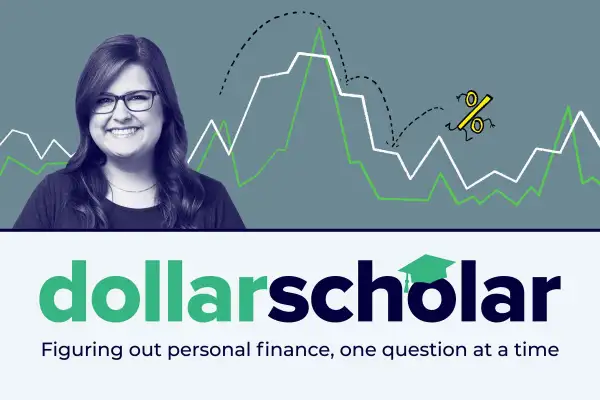Dollar Scholar Asks: Should I Switch Banks in Pursuit of Higher APYs?

This is an excerpt from Dollar Scholar, the Money newsletter where news editor Julia Glum teaches you the modern money lessons you NEED to know. Don't miss the next issue! Sign up at money.com/subscribe and join our community of 160,000+ Scholars.
I work from home, but I don’t work alone: Whenever I walk into the kitchen to refill my coffee, I find my roommate’s cat lying on the floor, blissfully napping in the sun rays streaming in from the window.
Truman's got us humans wrapped around his finger. During the winter, we bring his bed into the kitchen and position it in the light so he can be extra warm. This, of course, means one of us has to get up and drag the bed — with him in it — a couple inches every 30 minutes as the sun moves in the sky. What a life.
I was reminded of Truman’s sun siestas when I read recently about how folks are moving their deposits from bank to bank to try to maximize their annual percentage yield, or APY.
Though the Fed hasn’t made any definitive moves yet, the sky-high APYs that have become the norm for high-yield savings accounts have started to fall, giving new urgency to the so-called “rate-chasing” trend.
Should I try rate-chasing?
Cicely Jones, a certified financial planner at Equitable Advisors, tells me that moving my cash once can be smart, especially if I’m going from a standard savings account to a high-yield account. For context, the average savings rate is 0.45%; even with its newly reduced APY, Ally is offering 4.2%.
Beyond that, however, chasing rates is tricky.
“Moving initially to a place with a higher interest rate than your bank is great,” Jones says. But it’s a different story, she adds, “if you're choosing, like, monthly or quarterly or what have you … who's going to be the best based on maybe 0.1% difference.”
Jones says she worries about how easy it is to mistime my moves and miss out on a potential interest-rate payment from my previous bank (or my new one). Another risk is accidentally leaving some money behind in the shuffle.
These sorts of logistical hurdles can be financially draining at worst and annoying at best.
“Me personally, I’m not chasing any additional 0.1%, 0.2% percent just for simplicity,” says Kyle Mack, a CFP at Zhang Financial. It’d be “a hassle” to keep track of everything, he says.
Zhang’s Rob McDougall points out that how much of a pain this is depends on how much money we’re talking about.
If someone is moving $500,000 from bank to bank to capitalize on slightly different APYs, it can mean a significant payday (and therefore might be worth the time it takes to set everything up). But if the amount in question is closer to $10,000, the increase in yield isn’t going to be drastic enough to justify the legwork.
In fact, if I have so much cash in my savings that rate-chasing would line my pockets, a high-yield savings account is probably not the best place for it.
Jones recommends keeping three to six months of expenses stashed in a high-yield savings account for my emergency fund. But unless I’m planning to buy a house or car or whatever in the near future, she says I should probably invest the rest. She suggests I take an online risk tolerance questionnaire to figure out a good combination of stocks and bonds, then invest systematically.
(For his part, McDougall says something diversified like Vanguard's Total Stock Market ETF or iShares' Core S&P Total US Stock Market ETF might be good for young adults dipping their toes into investing.)
Taking a long-term view is definitely the way to go, according to U.S. Bank’s Sekou Kaalund, head of branch and small business banking. He tells me that my decision to switch banks should ideally be tied to something beyond “the shiny object,” or high APY, because that can change on a whim.
Plus, deepening my relationship with a bank I already have can be fruitful.
Kaalund says they may be more likely to help me when I need it down the road, because I’m meaningful, loyal client as opposed to a rando who just bopped in to take advantage of a high APY.
The bottom line
Rate-chasing is largely a waste of time. The yields aren’t going to be worth the elbow grease, and if they are, I should probably consider investing instead.
“My best advice is to find a bank you trust with a good APY and stick with that,” Jones says. “Check once a year to make sure it's still competitive, and maybe make a switch then if it's not.”
More from Money:
High-Yield Savings Accounts vs. CDs: What’s the Difference?
Financial Planners Are Telling Clients to Make This Investing Move Before Interest Rates Drop


